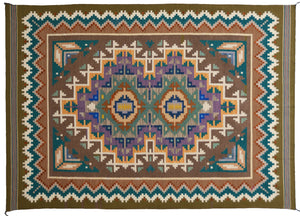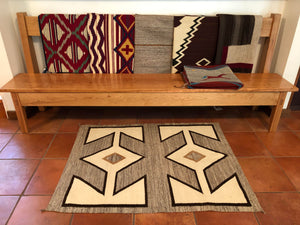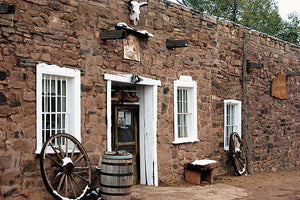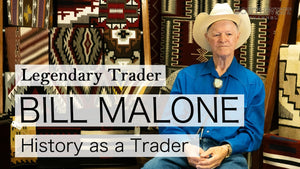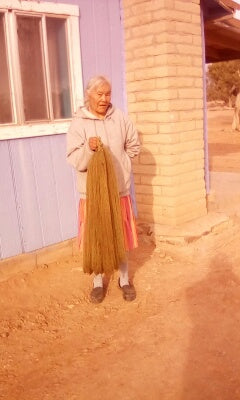Churro Sheep : Back from the Brink!

For hundreds of years Churro sheep have been the center of Navajo life, yet the animal was nearly exterminated by outside forces.
Steve started working with Navajo weavers in the early 1970s and in the 1980s. He was very interested in improving the Navajo weaving quality by distributing better wools to some of his better weavers. During this time it was New Zealand Romney and Lincoln wools he would distribute to some of the better weavers in the Wide Ruins and surrounding areas. Many of these works were featured in his book The Fine Art of Navajo Weaving.
In the 1990s the economy was not very good and the natural dyes of the Wide Ruin weavers were copied commercially so the uniqueness of their weavings was compromised in value. At this time, Navajo weavings were missing something. Steve met with an old friend, Ray Dewey, in Santa Fe and they discussed how the quality of Navajo weavings could be improved at this point in time. The answer was the wool and the dyes.
The best weaving wool for the Navajo rugs and blankets is the Churro sheep wool. The historic pieces that have been present since over 100 years ago are clear evidence that the Churro wool is the best and only becomes better with time. This conclusion planted the seed to bring Navajo churro wool back to the loom. There were existing efforts to revive the Churro sheep since it was on the endangered species list, but nothing to improve genetics enough to have a high quality weaving wool. Navajo churro wool was the first weaving wool of the Navajo Nation because of its low lanolin content, long staple and translucent qualities. Bringing the churro sheep back to the Navajo weaver and the wool back to the loom was an important goal for Steve and Gail.
Steve was able to find the source of the Navajo Churro Reg
- Beth Barth

